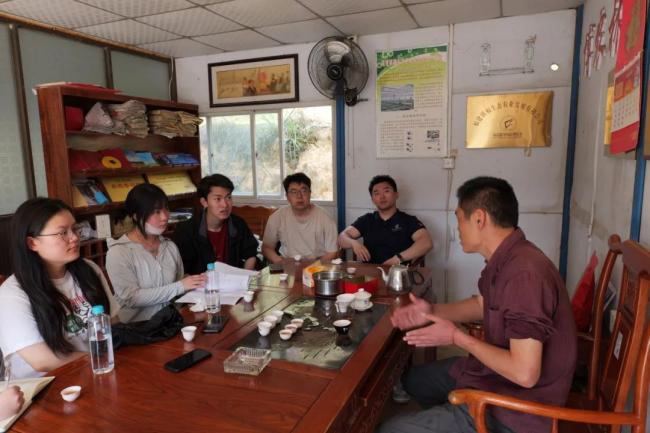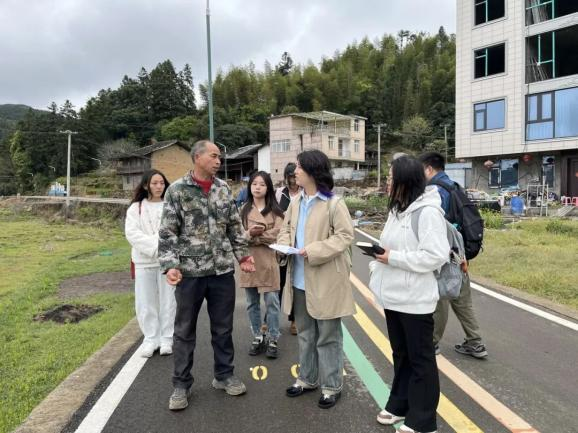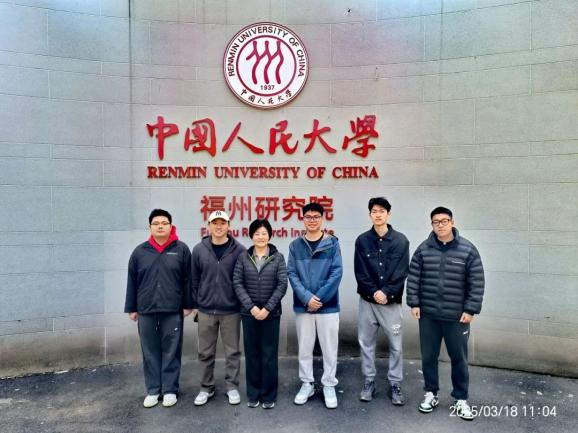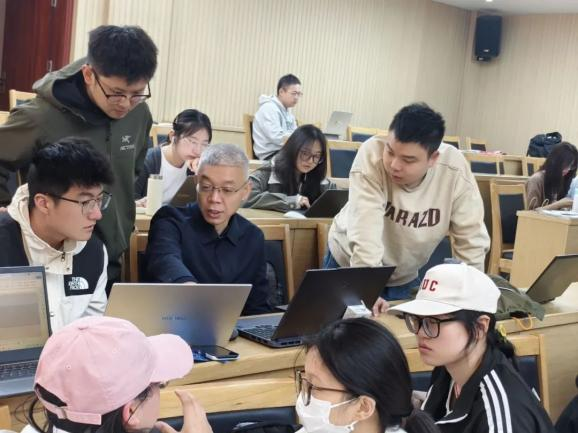In the heart of Fujian Province, where terraced tea fields cascade down misty mountains and plum blossoms perfume the air, 41 graduate students from Renmin University of China’s School of Agricultural Economics and Rural Development recently concluded an intensive 28-day immersion into the complexities of rural revitalization.

From March 16 to April 12, these aspiring policymakers and agricultural specialists traded Beijing’s lecture halls for the rugged landscapes of Yongtai County, a region grappling with the dual challenges of preserving ecological treasures and uplifting local economies.
Their mission was to co-create solutions for a cluster of pressing questions posed by local governments and industries, which included a series of questions -How can technology amplify the brand influence of traditional tea culture? What pathways exist for upgrading the oilseed camellia industrial chain? Can Yongtai position itself as China’s first ecological green plum demonstration town? And crucially, how might rural industries sustainably share benefits with farmers?
The program, dubbed the "Excellence in Three Rurals: Knowledge in Action" innovation training course, represents a bold pedagogical experiment blending academic rigor with grassroots pragmatism. Over four weeks, participants engaged in a three-pronged curriculum combining classroom lectures, field investigations, and collaborative problem-solving sessions with local stakeholders. Professors from RUC delivered condensed modules on agricultural marketing, rural inclusive finance, and county-level revitalization case studies, while industry experts from agricultural consultancies and eco-tourism firms provided real-world context.
“This isn’t theoretical roleplay,” emphasized Professor Tong Zhihui, the program’s lead designer. “We’re equipping students to transition from passive learners to active researchers and solution architects. The questions they’re tackling aren’t hypothetical -they’re the exact pain points keeping Yongtai’s officials and entrepreneurs awake at night.”
The learning journey unfolded across Yongtai’s diverse ecological zones. In Tong’an Township, celebrated for its century-old tea traditions, students traced the lifecycle of Yongtai Fine Tea from sun-drenched plantations to bustling processing workshops. While the aroma of freshly roasted leaves hinted at cultural heritage, discussions with tea farmers revealed stark realities: aging growers struggling with labor shortages, fragmented cooperatives lacking digital marketing skills, and generational divides threatening artisanal knowledge. “We initially imagined romanticized tea ceremonies,” admitted participant Tang Qian, “but the deeper we dug, the more we saw the tension between preserving traditions and adopting modern business models.”

A revelation occurred at Xianpinyuan Camellia Oil in Wutong Township, where students encountered a model defying expectations. What appeared as a rudimentary operation -weather-beaten storage sheds and manual presses -masked an ambitious circular economy vision. Through partnerships with research institutes, this enterprise has developed camellia-based cosmetics, medicinal extracts, and agro-tourism programs, demonstrating how a single crop could anchor a five-pillar industrial ecosystem. “It taught us to look beyond surface-level ‘backwardness,’” reflected student Fu Yuheng. “Rural industries often hide quiet revolutions.”

Perhaps the most symbolically charged investigation unfolded in Geling Township’s plum groves, where 67,000 tons of green plums ripen annually. Here, the disconnect between agricultural abundance and value capture became starkly evident. Despite supplying major food processors, Yongtai’s plum growers remain price-takers in volatile commodity markets. “The old model of hoping for good harvests and favorable prices is unsustainable,” argued Wei Chengshu, whose team proposed transforming plum orchards into carbon-neutral “experience zones” combining eco-tourism, health retreats, and biotech R&D. “We’re advocating for ‘ecology-plus’ strategies -using environmental assets to add value at every production stage.”
What distinguished this initiative from conventional field studies was its emphasis on co-creation. Students didn’t merely observe; they facilitated workshops where farmers critiqued prototype business models and officials stress-tested policy recommendations. At one session, tea growers debated the merits of a proposed “tea garden trusteeship” system -a collective management scheme aimed at overcoming land fragmentation. Elsewhere, local bureaucrats and students sparred over the feasibility of establishing a regional brand premium versus pursuing niche export markets.

The program’s crescendo arrived on April 11 at the Fuzhou Research Institute of RUC, where teams presented their solutions to an audience comprising Yongtai’s deputy county mayor, township leaders, and industry representatives. The oilseed camellia group outlined a triple transformation strategy: establishing Party committee-led industrial clusters, pursuing differentiated product positioning across county zones, and monetizing ecological assets through carbon credit systems. The tea team proposed a digital storytelling platform to connect urban consumers with tea artisans via livestreamed harvest rituals. Most ambitiously, the plum group envisioned a “Green Plum Eco-Valley” integrating smart agriculture, zero-waste processing parks, and plum-blossom-themed wellness resorts.
Local responses revealed both enthusiasm and the gritty realism of rural governance. Fang Huizhong, Yongtai’s deputy county mayor, praised the “policy-aligned, implementable” nature of proposals while acknowledging funding and skill gaps. She Qiang’er, deputy mayor of Geling Township, noted the tension between ecological preservation and job creation: “Your ‘ecology-plus’ concept is visionary, but we need phased roadmaps -how do we first convince farmers to adopt organic practices when chemical fertilizers promise quick yields?”
For participants, the deepest lessons transcended technical solutions. “Textbooks reduce ‘county economies’ to GDP figures and sector ratios,” remarked Xu Yitong. “But here, it’s about the woman managing three tea terraces while caring for her grandchildren, the young camellia entrepreneur torn between expanding or preserving his father’s legacy. Rural revitalization isn’t a spreadsheet exercise -it’s negotiating hope and anxiety in every household.”

Program leaders emphasize this human-centered approach. “Rural China’s challenges can’t be solved by remote experts parachuting in with blueprints,” said Professor Zhong Zhen, the school’s associate dean. “Our pedagogy insists students immerse themselves in the lived realities—the muddy paths, the dialectal conversations they barely grasp, the exhaustion after hiking terraces all morning. Only then can their proposals balance innovation with cultural humility.”
As China intensifies its rural revitalization campaign, programs like this signal a broader shift in agricultural education. Universities are increasingly serving as matchmakers between local governments’ practical puzzles and students’ analytical firepower -all while nurturing a generation comfortable navigating both spreadsheets and soybean fields. For Yongtai, the immediate gains include fresh perspectives on perennial issues; for RUC, it’s about redefining what a 21st-century agricultural curriculum entails.
The final report’s binding may gather dust, but its ideas continue resonating. Weeks after the students departed, Tong’an’s tea cooperatives began experimenting with TikTok storytelling, while Wutong’s camellia oil makers drafted a geographic indication application. As spring rains nourish Yongtai’s tea bushes and plum saplings, so too does this experiment nourish a new paradigm of town-gown symbiosis -one where academic rigor and earthy pragmatism cross-pollinate to grow solutions from the ground up.


